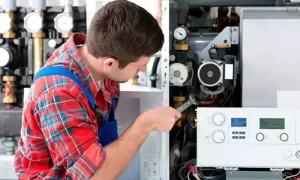Choosing the best pond filter may be a challenging process as it plays an important role in keeping the water clean and your fish happy. Adequate system will vary which is based on the size of your pond, number of fish you want your pond to hold. Also the specific needs of your pond from such small pond features which can be filtered in-pond to premier state of the arts’ drum systems for koi ponds.
Knowledge of such factors enables you to choose a filter that maintains ease in maintenance towards making an aquatic ecosystem thrive.
Size Matters: Match Your Filter to Your Pond
The initial step will be the calculation of the volume of your pond (length x width x depth x 1000= litres) and the fish count in your pond. A goldfish pond requires less filtration than a koi-heavy one, whereas a pond drum filter is most appropriate for large, high-waste configurations.
Experts like That Pond Guy often recommend drum filters for serious koi enthusiasts, as they automate waste removal and keep water pristine.
Filter Types Explained
1. In-Pond Filters
- Best for small or wildlife ponds
- Easy to install (no plumbing) but limited capacity.
2. Pressurized Filters
- Versatile for small/medium ponds
- It can pump water uphill—great for raised ponds.
3. Flow-Through Filters
- Most efficient for large ponds
- Requires gravity return (must be placed above water level).
4. Drum Filters
- Top-tier mechanical filtration for koi/swimming ponds
- Self-cleaning but higher upfront cost.

The Biology Behind Clean Water
A great filter combines mechanical (trapping debris) and biological (breaking down toxins) filtration. Sponges and foam handle both, while specialized media like Hel-X boost beneficial bacteria. For algae control, pair your system with a UV clarifier—it zaps green water before it starts.
Location & Installation Tips
- Space: Flow-through filters need elevation; pressurized units can hide underground.
- Maintenance: Drum filters automate cleaning, while sponges need weekly rinsing.
- Upgrades: Over-filter if your pond gets full sun or heavy fish loads.
Pro Advice for Lasting Clarity
- Don’t skimp: Undersized filters lead to murky water and stressed fish.
- Layer media: Combine mechanical (sponges) with biological (ceramic rings) for best results.
- Consult experts: Companies like That Pond Guy can tailor systems to your pond’s unique needs.
Should You Use a Biological Filter?
Indeed. Biological filtration, being the way in which soluble (non-solid stuff) waste such as ammonia and nitrite is removed, is, therefore, as important as a mechanical filter. The dissolvable waste poisons fish pond water, and they are threatened with death if there is no biological filter to handle the soluble waste.
An efficient biological filter requires an active nitrogen cycle and adequate aerobic bacteria in the filter media in order to avoid the accumulation of harmful substances in any significant amounts.
Due to the fact that the aerobic (oxygen-dependent) microorganisms (performing the biological filtration) thrive in the form of dissolved oxygen in the pond environment, the additional pond aerator will substantially enhance the efficacy of the biological filter. In other words, a full pond filter system should provide good mechanical and biological filtering.




